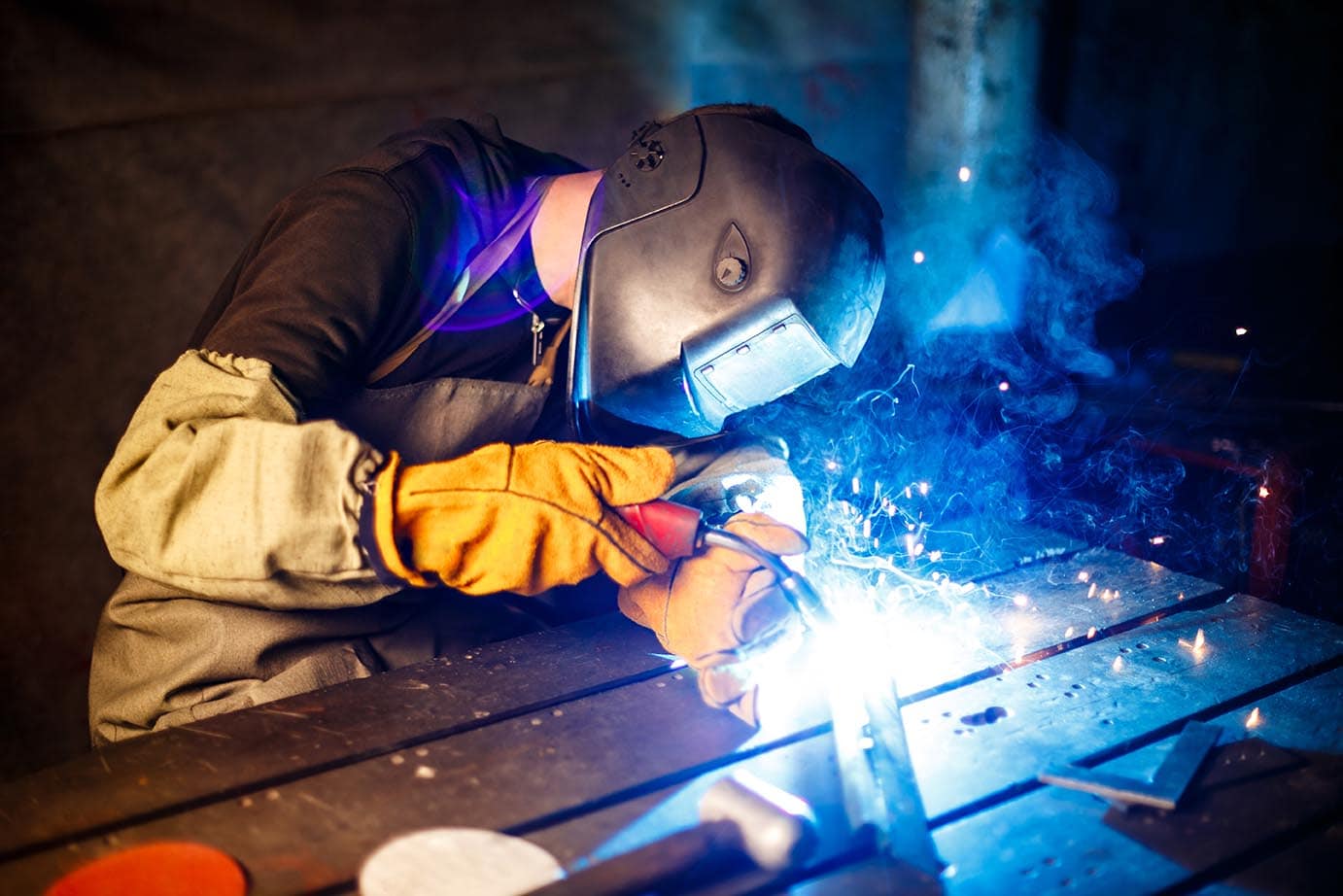Have you been trying to learn how to break a weld without a grinder? Maybe you have been trying to recover an existing one. Perhaps you are trying to replace one that has been destroyed.
In any case, you came to the right place and we’re here to help. We want to create the best free online welding guide possible, updated frequently without fail.
When you cut off the welded piece of steel with an angle grinder, that’s the easiest method. But, what if you don’t want to do that?
Well, in that case, you’ll need to use a cutting torch. The torch can heat up the surface of the steel, causing it to melt very rapidly.
This tends to release heat, which is why this technique is so popular. Remember, though, that you must only do it when you’re absolutely sure that the weld isn’t unsafe.
Can You Break A Weld Without A Grinder?
Contents
Yes, technically that’s true. But you must exercise caution when doing so.
Gouging a correctly placed weld using an oxy-acetylene torch or air-arc torch, for example, is a simple solution that professional welders might use.
With just a blowtorch, a welder can gouging the entire weld with a saw. Gouging the weld can also create the perfect condition for flying slag, which makes the weld slightly easier to break.
Even so, the results will be less than ideal and will require more effort to make the previously linked metals usable.
To avoid damaging the weld, most expert welders recommend cutting the metal away from the weld and scraping the area where the weld was.
By using a reciprocating saw to cut away the weld, you may now use additional instruments, such as a reciprocating saw, to finish the job.
The majority of expert welders will advise you that moving to the side will not do any good to the metal.
Removing the weld in this manner may lose you hours of welding time, so it pays to have a backup plan.
There are other methods to handle the damage of a welded joint.
How to Break a Weld Without a Grinder
The Mechanical Methods,/h3>
While mechanical breaking welds are unnecessary, they serve as a useful backup option if cutting with a grinder is impossible.
A well-done weld is frequently the result of the use of proper technique.
Attempting to add material using a rake angle, for example, will often cause the weld to crack or shatter instead of fusing.
Attempting to add material by a chipping motion will result in hot work, which can result in damage to the weld or eventually result in failure.
Using mechanical forces to break a relationship like welds would be no different than using mechanical force to bend nails.
On small short welds or tack welds, a chisel can be used, but the procedure just described is still most likely.
The time and energy required to drift a chisel far enough into the weld to break the linked pieces of metal is usually not worth the effort for longer, deeper penetrating welds.
A diamond point chisel is an extreme example of this. It would make tool marks very visible, and again the time and effort required would be extreme.
A diamond point chisel would be achievable as well, but it will have a short lifespan.
Your efforts would most likely come to an unsatisfactory end because of the end result.
The outcome would be less than optimal because the parts would be mixed weld metal.
When attempting to break welds, keep in mind that the material needs to be broken away from the workpiece. The force applied on the chisel needs to be applied carefully to avoid cracking the workpiece.
The outcome would be chisel marks, jagged cuts, and torn surfaces, all due to the improper use of a grinder.
The end result will be workpieces that are unsuitable for any job at all.
Torch Cutting
Because of the toxic components mixed into the gas, professionals are required to wear a certain type of mask over their face for protection.
Acetylene torches, for example, are used to combine acetylene and oxygen, and they can reach extreme temperatures. Blasting these flames onto the weld allows us to break it.
Begin by drawing a line from the starting point to the weld.
Hold the tip of the pen or marker near the weld. The tips of the flame from the torch must reach it in order for the mark to show.
Angle the torch in the direction that you want the tip to burn. Keep the tip tightly against or close to the line.
If necessary, adjust the flame’s angle until the mark shows. The next action causes the flame to shoot out, or up, from the tube.
The torch must be adjusted so that the flame will be aimed in the direction where we wish to break the weld. Next we have to place the line in the arch of the flame.
The flame will travel in an arc behind the line. The goal is to create enough heat to melt the weld.
If you are lucky, it may shatter instantly. If not, you may try to move it so that it is centered.
Note that the tip of the torch must be aimed directly at the weld point, or else it will not break it.
Without a doubt, fine-tuning the arch and adjusting the flame into a precise point is the key to this technique.
It is significantly more simple than using grinders, which may require pipe-cutting knowledge.
Plasma Cutting
Electric conductors, as well as an accelerated current, are used to generate the plasma.
To create an arc with intense heat, electricity must be applied.
Most welders are already familiar with this process. The generation of heat is caused by a small gas nozzle made from tungsten carbide, which is fired at very high speed by the machine.
Vanadium, nickel, and tungsten are commonly used to create this high-powered jet.
Plasma cutting is also known as a time -saver because of its high rate of productivity.
Unless you know how to troubleshoot, getting out of a sticky situation can be tricky.
There are no negative side effects from using plasma cutting. There are companies that rent plasma cutters if you have an emergency or something needs to be done immediately.
It is the most environmentally friendly method of welding.
Which Method Can Be Good For You to Breaking A Weld?
Choosing the approach that best meets your needs is entirely up to you.
The base material is the area of the metallic that is to be submerged into the molten metal.
Welding often results in the damage of one piece of metal to another, and tiny scratches or burrs can be left behind.
Those scratches cannot be buffed out. You may also break the edges of your metals, which means you’ll have to scrap them.
This is something that i’ve watched fellow welders do time and time again. They smash their welds simply to save a couple of bucks. A solution that is costly but is quality might be the better option.
Aluminum is without a question the most Difficult metal to Shatter.
It might be a nightmare if something goes wrong with your tool, and you will have to replace it.
A multi-process plasma cutter might be a good choice when you’re working on aluminum.
This is the type of tool that is capable of cutting through aluminum, stainless steel, and some other metals that are difficult to work with.
There are a few basic factors to taking things apart; none of them are simple.
It’s like devoting time and effort to repairing or replacing something without understanding what’s causing the flaw.
TIG welding might solve some of the problems associated with aluminum.
Aside from that, never purchase a tool without researching it.
Conclusion
Breaking a weld is determined in part by the type of material you want to create, the process’ strength, the material’s ability to bond with the metal you’re working, and the size of the weld.
During welding, it can present quite a health hazard.
Gloves will protect your hands from getting burned or seriously messed up. Prior to welding, make sure the welder wears the proper safety gear, including gloves and eyewear.
Experts recommend using a plasma torch and cutting torch to create smooth corners and joints. This way, you can work quickly and efficiently.
Smaller items work pretty well with a plasma cutter.
A plasma cutter is a fairly simple tool, and it’s actually not that complicated to use. The main distinction between a plasma cutter and a traditional grinder is that you’re not trying to grind the weld back to its original state after breaking it.
You’re just trying to remove any excess metal and make sure that the edges are all smooth.
Rather than abandoning the endeavor, you should try as many methods and techniques as possible to find the best one.
There are benefits , such as the smaller and lighter grinder, and less heat being applied to your metal. However, there are also disadvantages, like the fact that you’re scraping away small amounts of metal with every pass.
We recommend choosing the strategy that best meets your needs.
Do some brainstorming and choose a technique that helps you to get the job finished.
We’ve given you with some techniques and materials that we know work well. Follow these steps and your welding project will be complete in no time.
You may now simply break your welds by hand using a specialized tool. This tool is a handheld disc sander that will cut away the weld that you no longer want. You can quickly and easily cut away the weld, and then reuse it for your own boat or vehicle.



